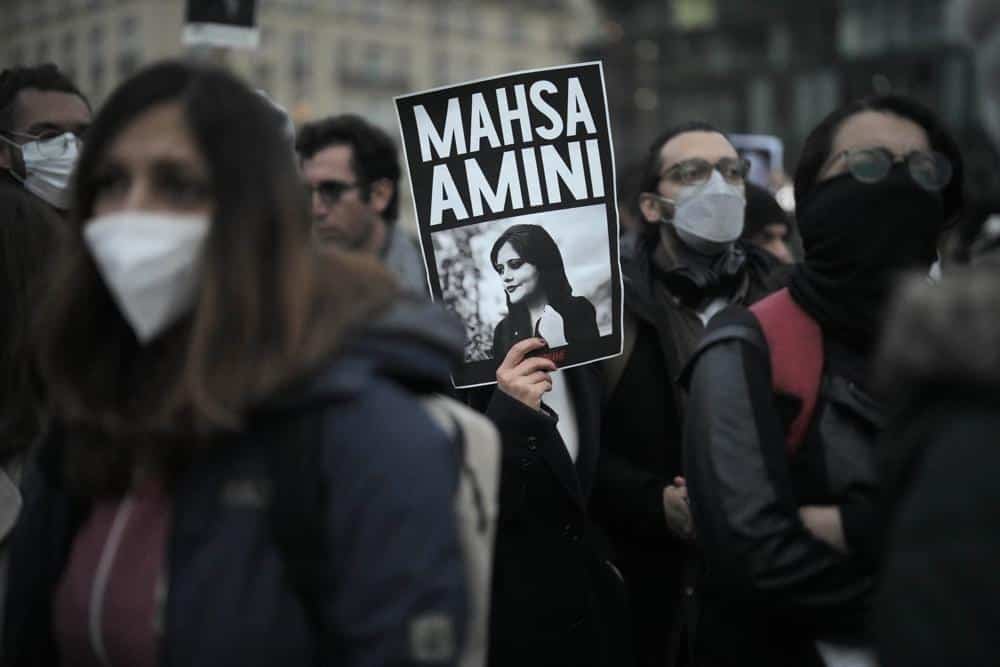Mahsa Amini’s name, forever etched into the annals of Iranian history, represents more than just a tragic tale of a young woman’s untimely death. It stands as a symbol of resilience, resistance, and empowerment for countless Iranian women who have decided to take a stance against the mandatory hijab and the suppression of their rights. Her legacy has birthed a movement that resonates not only within Iran’s borders but also across the globe.
On the anniversary of her death, amid the clatter of helicopters and heightened security measures, the Iranian government’s efforts to suppress any form of commemoration were clear. Detaining her father, Amjad Amini, roadblocks leading to Aichi cemetery, and the shutting down of the internet were just some of the measures the regime employed to contain the swelling tide of dissent. Despite such oppressive measures, the spirit of Amini’s fight for women’s rights remains undeterred.
The chants of “Woman, Life, Freedom!” are not merely slogans. They encapsulate the aspirations and dreams of millions of Iranian women, who, inspired by Amini’s sacrifice, have started to challenge the status quo. Many have taken the brave step of forgoing their headscarves, publicly defying a deeply entrenched system of religious and legal mandates. The authorities, left with the dilemma of how to respond to this growing tide of resistance, have doubled down on repressive measures, from deploying smart cameras and morality police to shuttering establishments serving women with a “loose hijab.”
Mahsa Amini’s tragic end in police custody remains a contentious issue, with her family insisting she succumbed to brutality at the hands of the ‘morality police’, and the government attributing her death to a pre-existing neurological condition. Regardless of the circumstances surrounding her demise, there’s no disputing the profound impact her story has had on the women’s rights movement in Iran.
International voices, from Joe and Jill Biden to Amnesty Iran, have lauded Mahsa’s impact, recognising her role in shaping a historic movement for gender equality. The wave of protests and commemorative events held in various cities around the world signifies the global resonance of her story.
Yet, as with all revolutions, the path is fraught with challenges. The looming ratification of a new hijab law threatens to impose even stricter penalties on those deemed in violation. The severe internet restrictions, crackdown on VPNs, and arrest of dissidents reflect a regime grappling to retain its grip on a changing society. Even academia hasn’t been spared, with professors at top universities facing expulsion, presumably linked to their support for the movement.
However, the attempts to subdue the burgeoning women’s rights movement in Iran seem futile in the face of a determined populace. The persistent campaigns, both within and outside Iran, showcase a populace eager to embrace change.
Mahsa Amini’s legacy serves as a poignant reminder that change is often birthed from sacrifice. As her mother poignantly stated, while the past year was filled with “sadness and sorrow”, the outpouring of “love and comfort” from all corners of the world serves as a testament to Mahsa’s enduring impact.
As Iranian women continue to redefine societal norms and expectations, they are armed with the legacy of Mahsa Amini, a beacon of hope and a symbol of defiance in the face of repression. Her story, far from fading, only grows more potent with each passing day, serving as a clarion call for equality, respect, and human rights.
Image Credit: AP Photo/Markus Schreiber, File



















